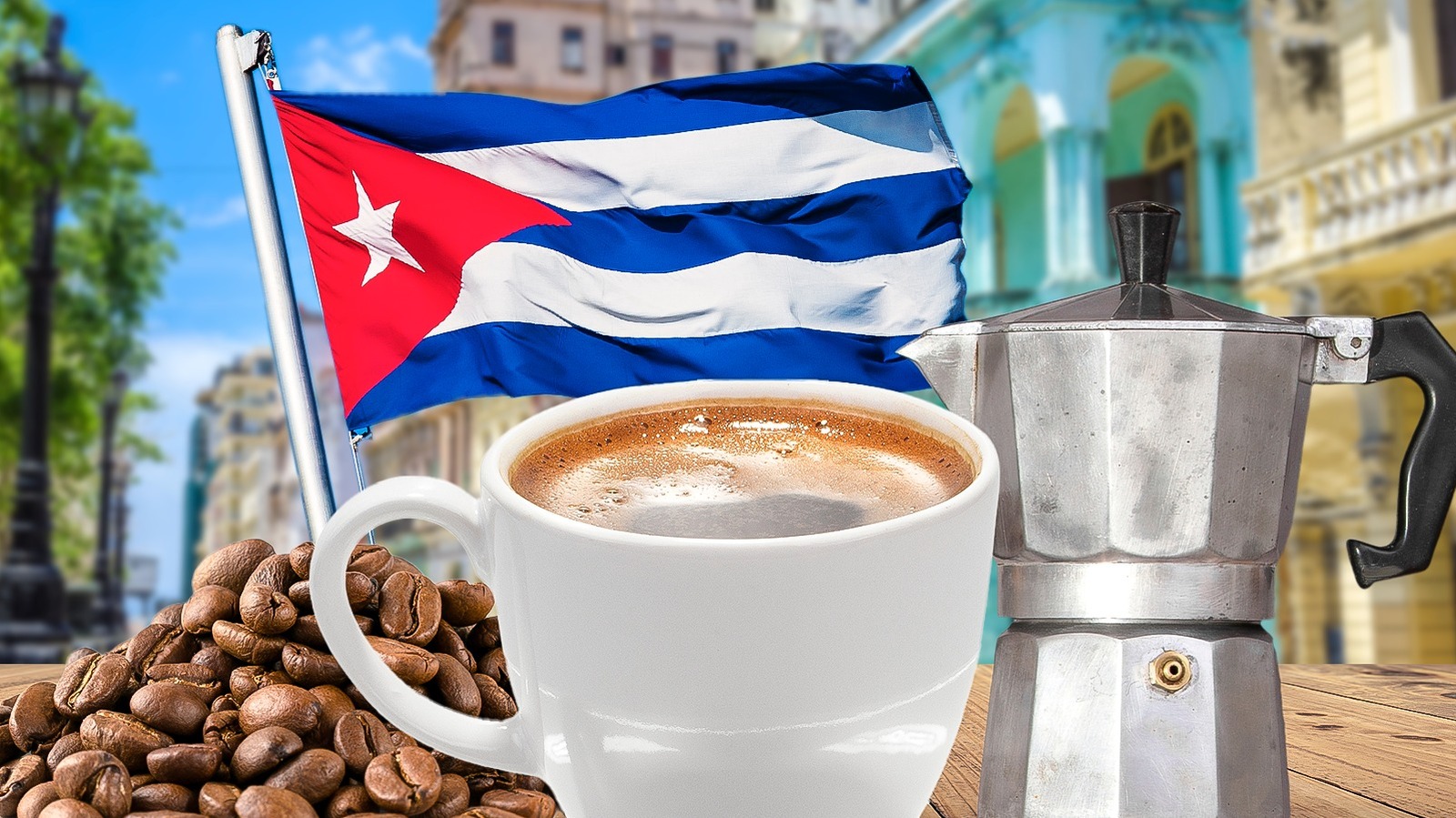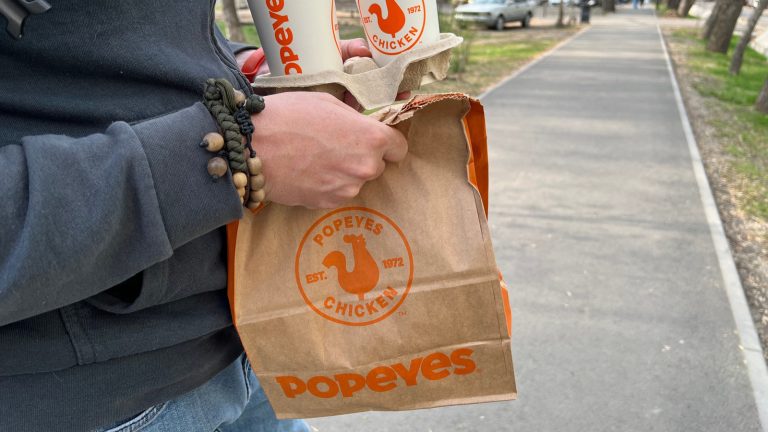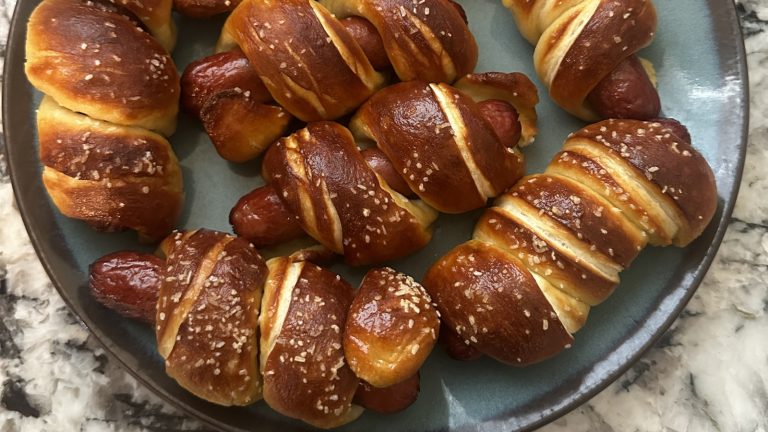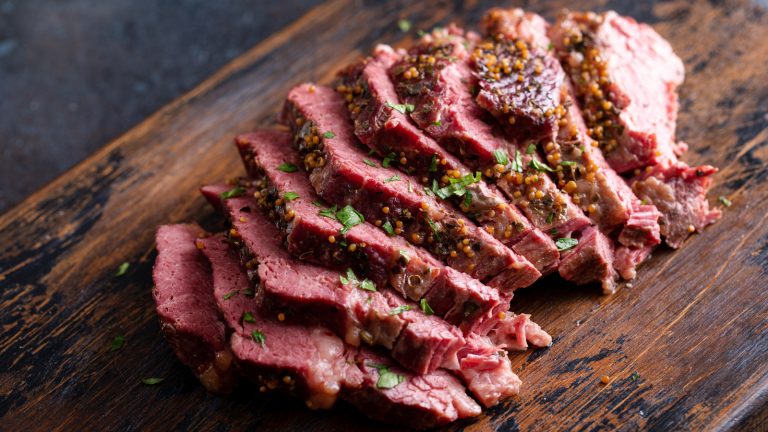While some folks drink coffee for the caffeine, others gravitate toward it for pleasure. Cuban coffee is different from the traditional cup you might order at your corner coffee spot — it’s a whole experience, not just a good cup of joe to wake you up in the morning. It’s reminiscent of Italian espresso or French café and is equally as rich and intense, while also being served in a demitasse cup. Frequently enjoyed topped with sweet foam, Cuban coffee brings together contrasting flavors that create an enticing cup.
Once one of the world’s largest coffee producers, Cuba developed a unique process for crafting a memorable cup of coffee. To learn more about this, we reached out to Bernadette Gerrity, vice president of Café Aroma. “I grew up drinking Cuban-style coffee,” Gerrity tells us. “[I]t was a part of every family gathering and every day in general. My grandmother would tell us stories of growing up roasting coffee on her family’s sugar mill when she was a young girl.”
Everything that goes into creating a perfect cup — the beans, blend, roast, and brewing method — is connected to Cuban heritage. “I think what makes Cuban coffee special,” Gerrity notes in part, “is the time and care that goes into every step.”
Climate and soil contribute flavor to Cuban coffee beans
Cuban coffee begins with the bean and where it’s cultivated. Grown primarily in a few regions — the Sierra Maestra mountains, Escambray, and Guaniguanico in Pinar del Río — the coffee trees thrive in the hot, humid, tropical climate. Couple that with an enriched, fertile topsoil and trees like arabica and robusta varieties do very well. The better the tree, the better the bean. The better the bean, the better the coffee. You get the idea.
Most Cuban coffee farms are family-owned and small in scale. The ideal climate, combined with the farmers’ meticulous care, give the trees a chance to develop coffee beans with the signature smooth and balanced profile Cuban coffee is known for. The flavor of the bean may also be influenced by these coffee trees growing under the shade of canopy, which allows for a longer ripening process. This technique intensifies the beans’ aromas and flavors, resulting in a complex and robust profile. Meanwhile, the beans’ medium to high level of acidity accentuates their underlying chocolate and caramel notes.
Beans are roasted by hand using traditional Cuban methods
The first roasted coffee beans might have been discovered accidentally, but roasting requires skill and patience to create an evenly-toasted bean that isn’t burnt beyond palatability. Burnt beans produce bitter, dirt-like coffee. Beans harvested for Cuban coffee are typically roasted in the traditional way: by hand, using the skillet method.
Explaining that this process “[I]nvolves toasting green coffee beans over open flames in large metal pans,” Bernadette Gerrity emphasizes, “It’s incredibly labor-intensive and requires experience to avoid scorching, but the flavor it produces is unmatched.” Unlike roasting coffee beans via modern automated methods or with software enhancement — such as infrared or fluid bed roasting, which roasts beans with consistency and precision — roasting beans by hand over an open fire requires constant supervision and stirring. This adds a nuanced touch to the end result.
However, skillet roasting isn’t the only traditional method used in Cuban coffee production, Gerrity notes. Drum roasting, for example, is an automated rotating method that encourages more even roasting while retaining the benefits of an open flame. “Wood-fired ovens are used occasionally, as well,” says Gerrity. “The beans have to be stirred manually, but it’s a very traditional method that produces excellent flavor.”
Beans are roasted dark to create a strong, deep flavor
Bernadette Gerrity explains that Cuban coffee stands out for its bold, dark roast, which matches the island’s vibrant culture and style, heralding the Cuban culture’s zest for life. “Cubans love dark roasted coffee!” she stresses. Dark roast caters to the Cuban preference for a strong, intense flavor. “This roasting style brings out the coffee’s natural sweetness, with notes of caramel and chocolate paired with a touch of smokiness that takes it to the next level.”
Gerrity also says that a dark roast is particularly suited for Cuban coffee’s small serving size as well as traditional Cuban-style coffee beverages, such as the iconic cafecito (or “little coffee”). After all, if your coffee is small and mild, it’s less likely to be enjoyable, so a dark roast offers the ideal flavor profile. “Additionally,” she says, “since Cuban-style coffee is typically on the sweeter side, the contrasting bold, slightly bitter notes help balance out the sweetness.”
The fine grind of Cuban coffee creates a more intense flavor profile
Not only is Cuban coffee specifically roasted dark, but the beans are also ground finer than standard drip or American-style filtered coffee. “Cuban coffee is ground very fine, almost powder-like,” Bernadette Gerrity says, “in preparation for brewing in stove-top espresso makers — I love making mine in a classic moka pot!” This fine grind allows for a fuller extraction of flavor since more of the coffee’s surface area is being brewed, resulting in a concentrated, thick, and strong cup of java.
Coarser grinds that are typically used for drip machines or French press methods, Gerrity notes, produce a lighter, more diluted cup of coffee, which is not what Cuban coffee is. “The fine grind is key to the Cuban coffee experience since we like our coffee rich and bold,” she explains. While most Cuban coffee is a fine grind, some companies — like Café Aroma — may offer whole beans so you can make the grind texture you prefer. Just don’t grind your coffee too fine, otherwise you run the risk of clogging up your espresso maker or moka pot.
The traditional brewing method is the moka pot
From drip to pour over to French press, there are a variety of brewing methods for all types of coffee. Ideally, Cuban coffee is brewed using an espresso-style method, like Bernadette Gerrity’s go-to: a moka pot. This forced hot water method extracts the most intense yet smooth flavor from fine coffee grounds. Gerrity says, “Generally, Cuban coffee is richer, bolder, and stronger than regular coffee made with other brewing methods.” A moka pot offers a simple, streamlined brewing method — it uses lower steam pressure than an espresso machine and requires a slightly coarser grind size to develop that deep, concentrated shot of coffee. “It has a really nice chocolatey, caramel, and smoky flavor,” Gerrity adds.
The moka pot’s easy and effective stove-top brewing process produces stronger coffee than a standard drip machine and smoother taste than an electric percolator. You might be familiar with its design — typically stainless steel with a bottom chamber for water, a basket in the middle for coffee grounds, and a top carafe to collect the brewed result. It’s part of a typical Cuban breakfast, because Cuban coffee is all about connecting with friends and family. “[W]hat I learned from growing up in a Cuban, coffee-loving family,” Gerrity says, “is that coffee is a ritual and it’s something to be shared.”
Sweet foam plays a role in making the perfect Cuban coffee
Just as there is an array of coffee styles defined by specific ratios of espresso, milk, water, or sweetener — such as espresso, cappuccino, Americano, and latte — Cuban coffee features a diverse range of distinctive preparations, as well. In Cuban coffee culture, sweet foam plays a vital role in creating the perfect café Cubano. It’s essentially espresso blended with demerara (or raw) sugar, and the blend creates espumita, the enticing, thick, and creamy layer of caramel-colored foam that sits atop the bold espresso. Bernadette Gerrity explains, “Espumita, the frothy, sweet foam made by whipping sugar with the first few drops of brewed coffee, takes the coffee to the next level.” Not only is a Cuban coffee pleasing to the eye, but the contrasting flavors are also cherished by Cuban coffee drinkers.
It’s not just the café Cubano that graces Cuban kitchens, though. The cortadito is another classic that builds on café Cubano by adding sweetened condensed milk, typically in a 1:1 or 1:2 espresso-to-milk ratio, and is often served in a slightly larger cup. Café con leche, meaning coffee with milk, resembles a sweet cappuccino or latte with a higher milk to espresso ratio, frequently with the scalded milk served alongside the café Cubano or cafecito so you can add it at your leisure.
Different but similar, the cortado, a Spanish — not Cuban — preparation, features equal parts espresso and steamed milk. It’s less intense than café Cubano but stronger than café con leche.
Cuban coffee culture is a beloved social ritual
You really can’t talk about Cuban coffee without discussing family and community. Unlike the typical American hustle culture — grabbing quick to-go coffee at the drive-thru — Cuban coffee is regarded as a time for slowing down, enjoying the coffee making process, and sharing it among friends. Even Bernadette Gerrity utilizes on-the-go, Western coffee culture on her busiest days, but the individual experience pales in comparison to the shared one. “Cuban coffee culture is so intertwined with social ritual,” she says, “and the colada and espumita are perfect examples of this.”
Colada is a larger version of cafecito, because it’s meant to be shared. Gerrity says that most people think of an espresso as an individual coffee because it’s served in such a tiny cup made for one. But the colada, a large serving of espresso, is enough for several tiny cups of espresso. It hammers home the fact that coffee is shared and a social ritual. “It also makes you pause and put care and time into the ritual of making coffee,” she says. “We all need the reminder to slow down and enjoy life, and that’s what sharing colada and espumita is all about.”
Everything about Cuban coffee is made to be bold
Family, friends, vibrant flavors, robust profiles, and cultural heritage converge together to craft what makes Cuban coffee so special — it’s a time-honored tradition that reflects the island’s fiery spirit and pizzazz. Everything about Cuban coffee is designed to be strong and striking, from its rich aroma to its bold taste. It’s one reason why Cuban coffee is served in such small cups — the intensity and potency is deliberate. “It’s definitely stronger than American and European coffee,” Bernadette Gerrity explains. “The fineness of the grind not only extracts [more] flavor but also caffeine.” And since Cuban coffee is often enjoyed in small quantities, it’s why Cubans prefer it strong.
This strength suits Cuban coffee’s role as part of a social ritual, where it’s sipped slowly during lively conversations or shared as a colada. The signature espumita adds a sweet, creamy contrast to the coffee’s boldness, much like hanging out with friends softens the stresses of life. Cuban coffee fosters meaningful connections, celebrates community, and expresses Cuba’s vibrant cultural identity.





